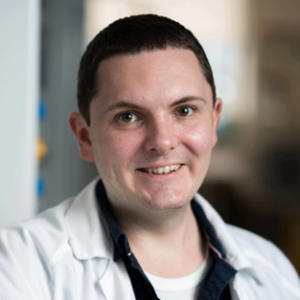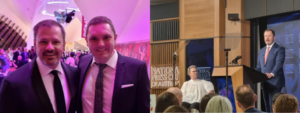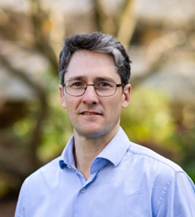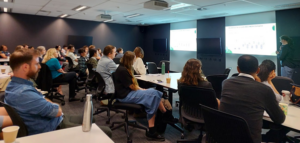Welcome to the April 2025 Phytogen!
We are back to our regular issue, and we have lots to share! We have reports from our representatives at Science Meets Parliament (SMP) 2025 and highlight our partnership with Functional Plant Biology. We have our monthly student contribution, this month featuring Suyan Yee from the Australian National University, and update from Dr Dugald Reid, (Whole Plants discipline rep) on the recent ASPS events in Victoria. To round up this issue, we have a contribution from ASPS member Dr Francine Perrier-Walker from University of Sydney. Also, don’t forget to renew your membership, if you haven’t already!
The ASPS Conference 2025 will be held in Adelaide in November. Remember to SAVE THE DATE! There is also still time to apply for the ASPS awards
You can stay connected with ASPS on social media on the following platforms. Join the conversation using #AusPlantSci and #ASPS2025 (for the conference). Tag us in your posts and stories to help us promote your science! Phytogen contributions will also be featured on our social media pages.
- X:@asps_ozplants
- LinkedIn: Australian Society of Plant Scientists
- BlueSky:@asps-oz.bsky.social
We welcome contributions from students, E/MCRs and established researchers at any time for publication in Phytogen. It is free and a great way to give your research profile a boost and share your findings! You can send your contribution to our editors Raz (razlin.azman@csiro.au) or Lucas (L.Auroux@latrobe.edu.au).
ASPS 2025 Conference

Start planning your participation now! More details will be available in upcoming Phytogen issues and on the conference registration website opening in June. If you have any questions about the conference, please contact Dr. Crystal Sweetman at crystal.sweetman@flinders.edu.au.
Award Applications Deadline extended!
Applications for the prestigious ASPS awards (Jan Anderson Award, Peter Goldacre Award, Teaching and Outreach Award) have been extended until 6 June 2025. The winners will be given an opportunity to present at this year’s conference in Adelaide
For detailed information and application guidelines, click here.
ASPS at Science Meets Parliament (SMP) 2025
This year the ASPS was represented by Dr. Nipuni Peththa Thanthrige and Dr. Ashley Jones at Science Meets Parliament. Below are their reports about this valuable experience.
Dr. Nipuni Peththa Thanthrige
Institute of Molecular Bioscience, The University of Queensland
 In February 2025, I had the pleasure and privilege of co-representing the Australian Society of Plant Scientists (ASPS) as a delegate at Science Meets Parliament in Canberra. This flagship annual event, organised by Science and Technology Australia, marked its 25th anniversary this year, celebrating a quarter-century of connecting STEM experts with policymakers and parliamentarians. Over two vibrant days, I joined a community of passionate scientists and engaged directly with influential leaders, learning how we can play a more active role in shaping Australia’s future.
In February 2025, I had the pleasure and privilege of co-representing the Australian Society of Plant Scientists (ASPS) as a delegate at Science Meets Parliament in Canberra. This flagship annual event, organised by Science and Technology Australia, marked its 25th anniversary this year, celebrating a quarter-century of connecting STEM experts with policymakers and parliamentarians. Over two vibrant days, I joined a community of passionate scientists and engaged directly with influential leaders, learning how we can play a more active role in shaping Australia’s future.
Day 1 was filled with engaging sessions focused on science communication, leadership, advocacy and policy. One standout session was Pitch Perfect: How to Talk About Your Science to the Media, which featured some of Australia’s top science communicators. They taught us how to effectively communicate complex science in a way that captures the imagination of policymakers, the public, and the media. The key takeaways were: “know your audience, speak with excitement and clarity, and use relatable language.” Another memorable session, Leading with Science: Elevating STEM for Economic Growth, highlighted the pivotal role research and innovation play in driving national prosperity. Also, I had the opportunity to attend the National Press Club address by the Hon Ed Husic MP, Minister for Industry and Science. He spoke candidly about Australia’s research and development (R&D) performance and the structural issues outlined in the government’s newly released strategic examination of the R&D system discussion paper. I also had the privilege of briefly speaking with Hon Minister Husic during the event about my current research.
The day concluded with an interesting session on Indigenous knowledge systems, which explored how indigenous knowledge can help address current and future challenges. Also, Mr. John Paul Janke from National Indigenous Affairs Editor, NITV shared a powerful perspective on First Nations knowledge and cultural heritage, reminding us of the deep-rooted scientific insight embedded in Australia’s history.
That evening, we celebrated the 25th Anniversary of Science Meets Parliament with a Gala Dinner at the National Museum of Australia. Surrounded by scientists, STEM superstars, academics, and policymakers, the evening was a brilliant tribute to the enduring impact of this program.
Day 2 began with an incredible opportunity to meet the Hon Senator Slade Brockman, Liberal Senator for Western Australia. We had an engaging discussion about the critical role of plant and agricultural research in sustainably feeding the growing global population. Senator Brockman expressed genuine interest in my current work using plants as biofactories to develop next-generation therapeutics. It was deeply rewarding to share how plant science research contributes not only to global food security but also to innovative health solutions and environmental sustainability—an approach the Senator strongly agreed with.
Another unforgettable highlight of Day 2 was the session ‘Using STEM for the Greater Good’, where the Hon Senator Mehreen Faruqi delivered a deeply inspiring and empowering talk. Her key message – ‘Feel the fear and do it anyway- it’s worth it’- was a powerful call to action for early career scientists. Her journey from environmental and civil engineer to Deputy Leader of The Australian Greens and federal parliamentarian served as a strong reminder of the meaningful and impactful roles scientists can play in public service and policymaking.
The event concluded with a fascinating conversation between Australian astronaut Katherine Bennell-Pegg and Nobel Laureate Distinguished Professor Brian Schmidt AC, who reflected on the limitless potential of Australian science.
Attending the Science Meets Parliament 2025 was an unforgettable experience. It provided a valuable opportunity to engage with policymakers and connect with passionate scientists from across Australia. The event was filled with energy, great conversations, and a shared commitment to strengthening the connection between science and policy. I’m truly grateful to ASPS for this opportunity and highly recommend it to fellow plant scientists. It’s a great way to build networks and be inspired by the important role we all play in shaping Australia’s future.
Dr. Ashley Jones
Post-doctoral Research Fellow, Research School of Biology, Australian National University (ANU)
Science Meets Parliament (SMP) stands as a pivotal annual event in Australia, bridging the divide between the scientific community and the nation’s policymakers. The 2025 iteration marked a significant milestone, celebrating its 25th anniversary of fostering these crucial connections. Thanks to the Australian Society of Plant Scientists (ASPS), I was fortunate to be one of the 397 delegates, amongst various STEM professionals and parliamentarians from across the political landscape. The two-day event was an enriching opportunity to learn, engage with policymakers, and reflect on how my own science could influence the complex process of national policy development.
The opening session by University of Canberra vice-chancellor Bill Shorten centred on the critical need for scientists to proactively communicate their innovations to the broader public, and emphasise the potential benefits for Australian society, education, and the economy. He highlighted that most Australians likely do not know what scientists are doing, describing R&D as a massive river nourishing the land, but it is silent and few know it’s there. Mr Shorten urged scientists to think about what happens if you weren’t doing your current research, what are the consequences?
Lunch was held at the National Press Club, with an address delivered by the Minister for Industry and Science, Ed Husic. A key announcement during his speech was the unveiling of the government’s discussion paper for the Strategic Examination of Research and Development. Mr Husic wants to strategically reposition Australia from a predominantly consumer of technology to a dynamic and innovative producer. He hit some home-run truths we all need to consider. Australia is at the top for research but amongst the bottom for integrating our discoveries into the economy and community. Australia is the ~8th richest country but 102nd on economic return. Mr Husic highlighted that science isn’t finished until it is communicated, adopted and implemented. Otherwise, there is no impact.
Photo: Lunch at the National Press Club, with an address by the Minister for Industry and Science, Ed Husic. I met him in person at the Science Meets Parliament gala dinner held at the National Museum of Australia
I really enjoyed the afternoon talk by John Paul Janke, National Indigenous Affairs Editor at NITV. He broadened everyone’s understanding of the profound contributions of Indigenous Australians to the realm of science and knowledge. The emphasis on ‘untold stories’ powerfully illustrated the existing gaps in the common understanding of Australia’s history and the scientific contributions of its First Peoples. It was an honour to thank him in person later that evening at the SMP gala dinner, held at the National Museum of Australia. It was a key networking event, I also met Ed Husic, Governor-General Sam Mostyn, Chief Scientist Prof Tony Haymet and CSIRO Chief Executive Prof Doug Hilton.
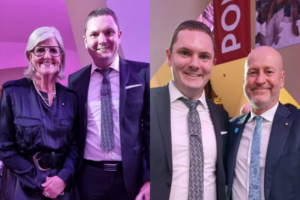 Photo: Gala dinner at the National Museum of Australia, with the Governor-General Sam Mostyn (left), and CSIRO Chief Executive Prof Doug Hilton (right).
Photo: Gala dinner at the National Museum of Australia, with the Governor-General Sam Mostyn (left), and CSIRO Chief Executive Prof Doug Hilton (right).
The second day of SMP we had a scheduled meeting with a political member, which was definitely an exciting and rare opportunity. I was one of three scientists lucky to be selected by Independent Senator David Pocock (which did trigger a little envy among delegates). It was a very busy time in parliament house, pressure from the upcoming election and important documents needed to be finalised. Senator Pocock’s office was very warm and welcoming. Seeing many decorative items on Australian natives, endangered species, biodiversity and the natural environment made perfect sense why I was chosen. A red light and alarm on the wall clock quickly started to engage, David had to go to senate! However, we were welcome to stay, got to know his political staff and watch in real time on a monitor that streamed the senate. His staff showed us some more of parliament house and took us to the senate entrance. Despite a hectic schedule, David made time for us outside the senate. We talked at length about the inherent difficulties in garnering sustained political support for scientific endeavours and how David really wanted to make a change for a better future. We pitched our science, what we were researching, and how it has benefited Australia. We talked about how we can translate our science to the next level, and how politicians and scientists can work together to achieve that outcome. Our conversation also touched upon the university sector, where we all (including David) expressed concerns regarding the leadership and governance of the ANU, especially in relation to financial management and transparency.
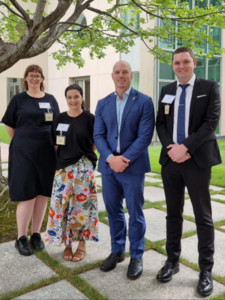 Photo: Three scientists meet Independent Senator David Pocock at Parliament House.
Photo: Three scientists meet Independent Senator David Pocock at Parliament House.
It was really intriguing to witness David’s own experience in the role of an independent in Australian democracy, with his capacity to inject fresh perspectives and renewed energy into the democratic process. I hope David is re-elected, as we definitely need more of his passion and energy in politics to bring change. Since SMP, David has been very active on many political fronts, including campaigning for better protection of our native plant and animal species, fighting to conserve the natural environment, and calling for a federal inquiry into the leadership at ANU, advocating for better governance.
In conclusion, SMP 2025 personally highlighted the crucial role of dialogue between science and politics in shaping Australia’s prosperity and well-being. The event’s success in fostering this collaboration is evident, and I am personally committed to continuing to contribute to a more scientifically informed society and government. It was a wonderful opportunity to engage with policymakers and connect with enthusiastic scientists from across Australia, and I highly recommend this experience to others.
Student Contribution

Suyan Yee (she/her)
PhD Candidate, Chan Lab
Division of Plant Sciences, Research School of Biology, The Australian National University
Connect with Suyan: Academic ANU Profile | X: @scienceYeeSu
Suyan’s scientific interest in maintaining plant productivity under stressful events stems from her childhood familiarity with frequent natural disasters affecting her grandparents’ veggie garden. This has ultimately led her to a PhD at the Australian National University (ANU), where she is currently a final year doctoral candidate in Kai Chan’s lab.
Her research journey began with a multidisciplinary Honours project in the Pogson and Corry labs at ANU. During this project, she computationally and biochemically characterised several molecular inhibitors of a key phosphatase implicated in stress-activated chloroplast signaling, with the goal of ‘priming’ and fine-tuning plant responses to abiotic stress.
Suyan then expanded her skill set by venturing into a technical research role with the Realising Increased Photosynthetic Efficiency (RIPE) project, funded by the Gates Foundation. “Being part of an international research consortium gave me a newfound appreciation for the innovation and productivity that sharing scientific knowledge and resources can achieve.”
Her PhD work now integrates aspects of these research areas, where she uses C4 plant systems to uncover distinct mechanisms that drive and protect photosynthesis in individual specialised leaf cells during abiotic stress. “By combining cutting-edge single cell transcriptomics with biochemical and live-cell imaging approaches, my research aims to provide novel strategies for future crop engineering efforts to overcome the yield-resilience trade-offs that plague traditional approaches of improving plant stress tolerance.”
Reflecting on research and her PhD journey so far, Suyan says, “The best part has been not only learning something new every day, but also being the first to discover it. It also feels incredibly rewarding to troubleshoot everyday challenges in the lab with creative solutions.”
Functional Plant Biology and ASPS
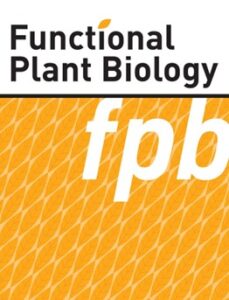
Functional Plant Biology is committed to working closely with the society to put Australian Plant Scientists in the spotlight and support the society in its goals.
We will use these opportunities in the future to highlight good news stories from the journal. As a community, your passion for the science you pursue deserves to be celebrated. We want the journal to contribute to this celebration of your community and highlight success when it occurs.
We are excited to continue our sponsorship of the Peter Goldacre Award. In addition, we are introducing a new Sponsorship for a Travelling Speaker Award to the ASPS conferences, aimed at supporting researchers who wish to share their work at your conferences and meetings. We will also continue our support of the ASPS-FPB Best Paper Award for Early Career Research.
Some ways in which Functional Plant Biology (and CSIRO Publishing) are working to support your publishing efforts:
- If you are based at an Australian or New Zealand institution, you may be eligible to publish Open Access in Functional Plant Biology at no charge to your research budget thanks to our Read and Publish Agreements. These agreements are not subject to caps.
- If you are a member of the ASPS based outside of Australia, or you have collaborators in Lower Income Countries, we are actively working to support their access to both read and publish in Academic Journals. We have recently signed the Research4Life Pact which guarantees cost-free Open Access publishing for those authors affected by these barriers.
- We have also recently signed an agreement with ResearchGate, improving the visibility of content in the journal.
“We look forward to working together to promote Australian Plant Science. Thank you for your support, and we are excited about the opportunities ahead”
Pat Hannah, Journal Manager at CSIRO Publishing
For more information on submitting to Functional Plant Biology, visit www.publish.csiro.au/fp or you can contact Pat (pat.hannah@csiro.au) for further information.
Recent ASPS events in Melbourne (VIC)
Whole Plants representative of the ASPS
Senior Lecturer, La Trobe University
Following the annual meeting ASPS Melbourne members resolved to try to meet 1-2 times per year with cross-institutional meetings including invited speakers or local ASPS meets. This provides good opportunities for student presentations and networking in Melbourne. If you are interested in organising an event or have an international guest that would be a suitable speaker, then please get in touch so we can organise our next meeting (dugald.reid@latrobe.edu.au).
Engineering photosynthetic carbon fixation for crop improvement
February 18th, hosted by Maria Ermakova (Monash)
Speaker: Professor Christine Raines, University of Essex, UK
Christine Raines discussed the potential of increased photosynthesis to improve crop plants, highlighting the Realizing Increased Photosynthetic Efficiency (RIPE) project and the potential yield benefits of elevated photosynthetic conversion efficiency. At higher CO2 concentrations, RuBP regeneration is most limiting, and SBPase overexpression is one approach to increase biomass and yield potential. The work highlighted the importance of going to the field where small cumulative benefits that might not be dramatic as a point-in-time measurements can lead to increases in biomass over a growing cycle.
ASPS Annual Meeting 2024
28th November 2024 | La Trobe City Campus
We had approximately 60 attendees with a mix of student and postdoc presentations and posters, followed by a dinner at the Bang Pop Thai restaurant and bar at Southbank
E/MCR Contribution
 A PROTOTYPE VERSUS A PROOF OF CONCEPT
A PROTOTYPE VERSUS A PROOF OF CONCEPT
By: Dr. Francine Perrine-Walker
The University of Sydney
Connect with Francine: LinkedIn
In the lab, we were interested in the role of arbuscular mycorrhizal fungi (AMF) in legumes as previous studies had shown that the AMF Glomus mosseae could transfer labeled nitrogen (N) via its mycelia to Sorghum bicolor (1). There was a problem: How could we measure N transport from AMF to legumes using labeled N in soil?
Before designing and running any plant growth experiment, we needed to think about the ideal plant growth system needed to address the problem i.e. N acquisition during beneficial plant-microbe interactions. Field experiments would be too expensive and soil microcosms have been shown to be easy to handle and inexpensive. They could be maintained under controlled conditions and provide more reproducible results than field tests, but the laboratory had no device, i.e., a soil microcosm growth system on-hand to use.
Two approaches could have been used: a) To ask fellow colleagues about what systems they used to run such experiments and through a collaboration use an established system or, b) To delve into past published studies to find soil microcosm designs that would address the problem we wanted to investigate. The latter was chosen, and with a colleague, Ralph Faux, a suitable soil microcosm design was found (Fig. 1a-c). After some months, gathering various materials from overseas and other components around the Centre for Carbon, Water and Food (Camden Campus), and dealing with problems in assembling the materials leading to modifications in the design, our soil microcosm prototype was built!
I did not know if the modified prototype could maintain plant growth. Furthermore, I knew nothing about the soil composition needed for such experiments and it was good to work with Ralph due to his background in ecology and soil science. We mixed soil types such as fine and coarse sand, coir (for organic matter), and soil samples collected from different locations at different ratios.
As time was against us (end of my 1-year contract), we tested the growth of plants in our prototype using various soil mixtures and vetch seedlings in the controlled environment facility (CEF; without labeled N). Every 2-3 days, plants were watered. After 28 days, the soil microcosms were dismantled (Fig. 1d).
Ideally, the soil mixtures would be sterilized prior to use for future experiments. However, use of the unsterilized soil mixtures allowed us to observe the formation of nodules. Furthermore, by trypan blue fungal staining, fungal structures were found within vetch roots (Fig. 1e-f). More work would be needed to refine the experimental protocol but failing quickly with the prototype allowed us to validate the proof of concept (or part of).
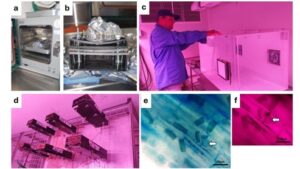 Testing of the modified microcosm prototype in the autoclave and it did not survive the test as shown in (b); (c) Ralph setting up in the CEF room; (d) setup of soil microcosms; (e) and (f) trypan blue staining of vetch roots displaying a putative fungal arbuscule within a plant root cell. Part of this work was presented at the Nitrogen 2023 conference. The modified prototype was based on the design by Kakouridis et al (2)
Testing of the modified microcosm prototype in the autoclave and it did not survive the test as shown in (b); (c) Ralph setting up in the CEF room; (d) setup of soil microcosms; (e) and (f) trypan blue staining of vetch roots displaying a putative fungal arbuscule within a plant root cell. Part of this work was presented at the Nitrogen 2023 conference. The modified prototype was based on the design by Kakouridis et al (2)
References:
(1) Koegel et al. (2013) Plant Signal Behav 8, doi:10.4161/psb.25229
(2) Kakouridis et al. (2022) New Phytol 236, 210-221, doi:10.1111/nph.18281.
Is Your Membership Up to Date?
ASPS membership connects you with Australia’s plant science community and provides valuable professional development opportunities. Student memberships are available at reduced rates.
Membership Benefits:
- Access to a network of plant scientists across Australia
- Discounted registration for conferences
- Eligibility for ASPS awards and travel grants
- Regular updates through Phytogen newsletter
Become a member, check and/or renew your membership status HERE.
Editors’ note
Phew, that’s a lot of plant science to catch up on! Thanks for staying with us.
Newsletter written & edited by Lucas Auroux and Razlin Azman.
We would like to thank all the contributors for this issue: ASPS representatives for SMP Dr. Nipuni Peththa Thanthrige, Dr. Ashley Jones, Functional Plant Biology & Pat Hannah, Dr. Dugal Reid and Dr. Francine Perrine-Walker.
Invited contribution: student contribution by Suyan Yee.

